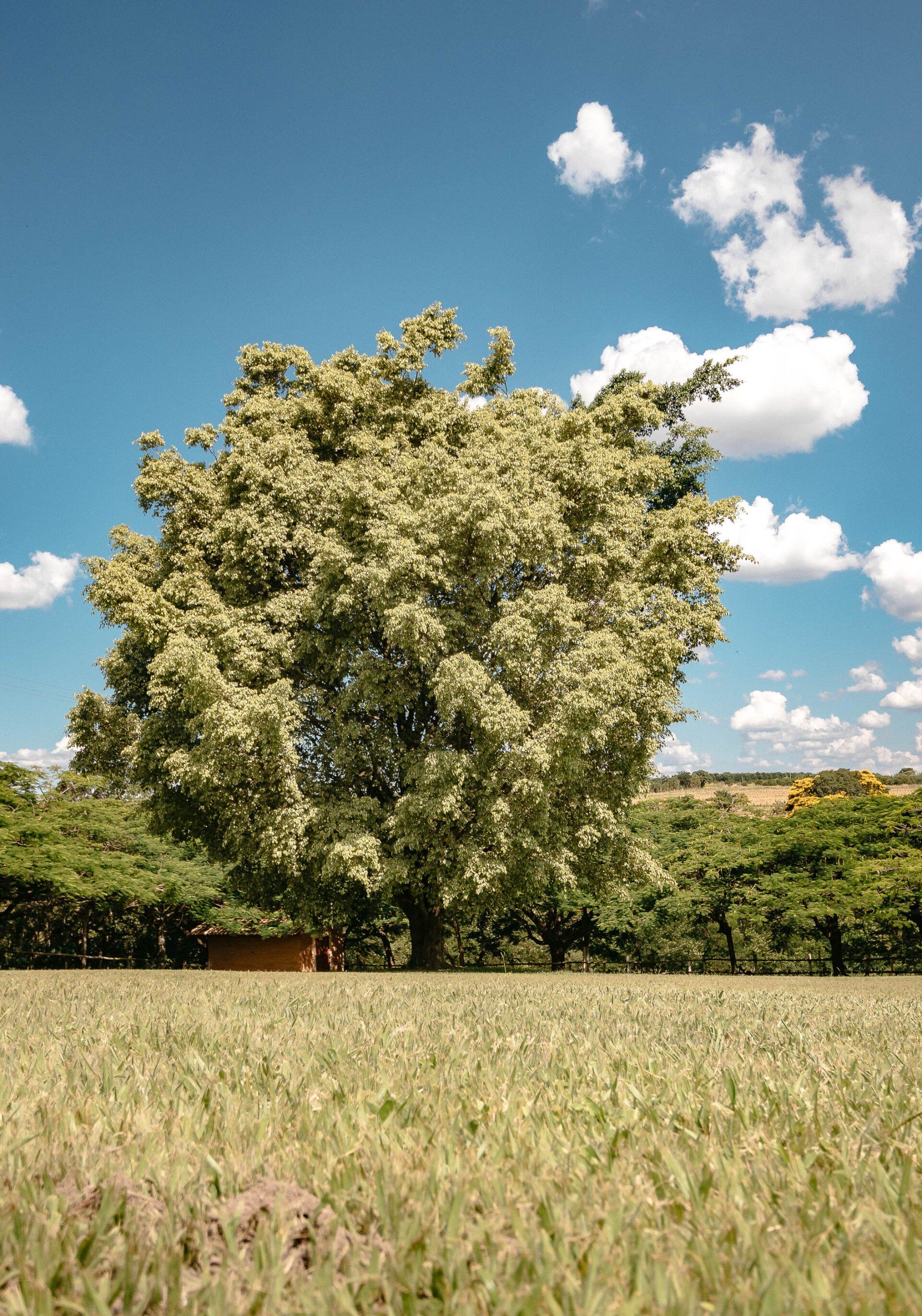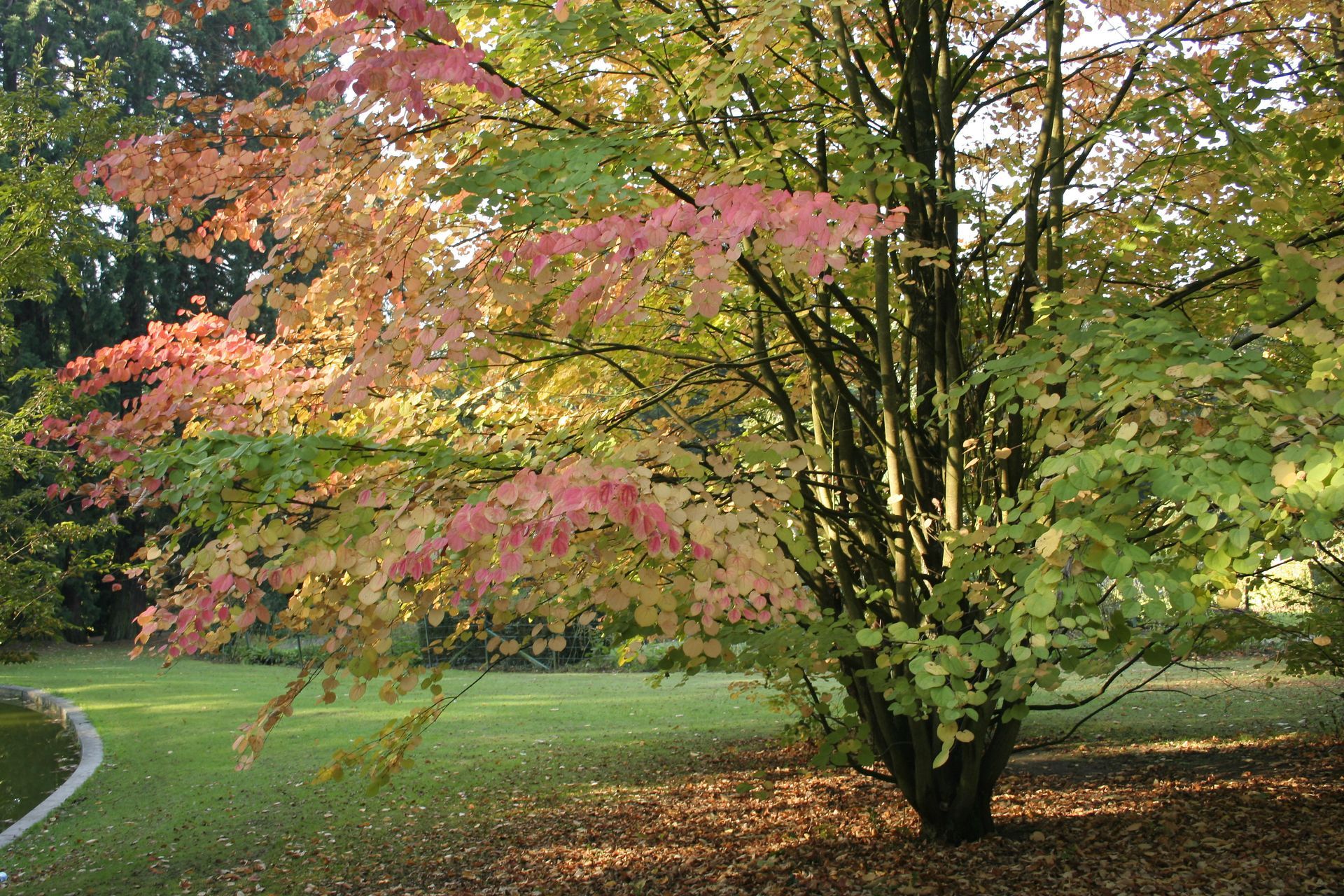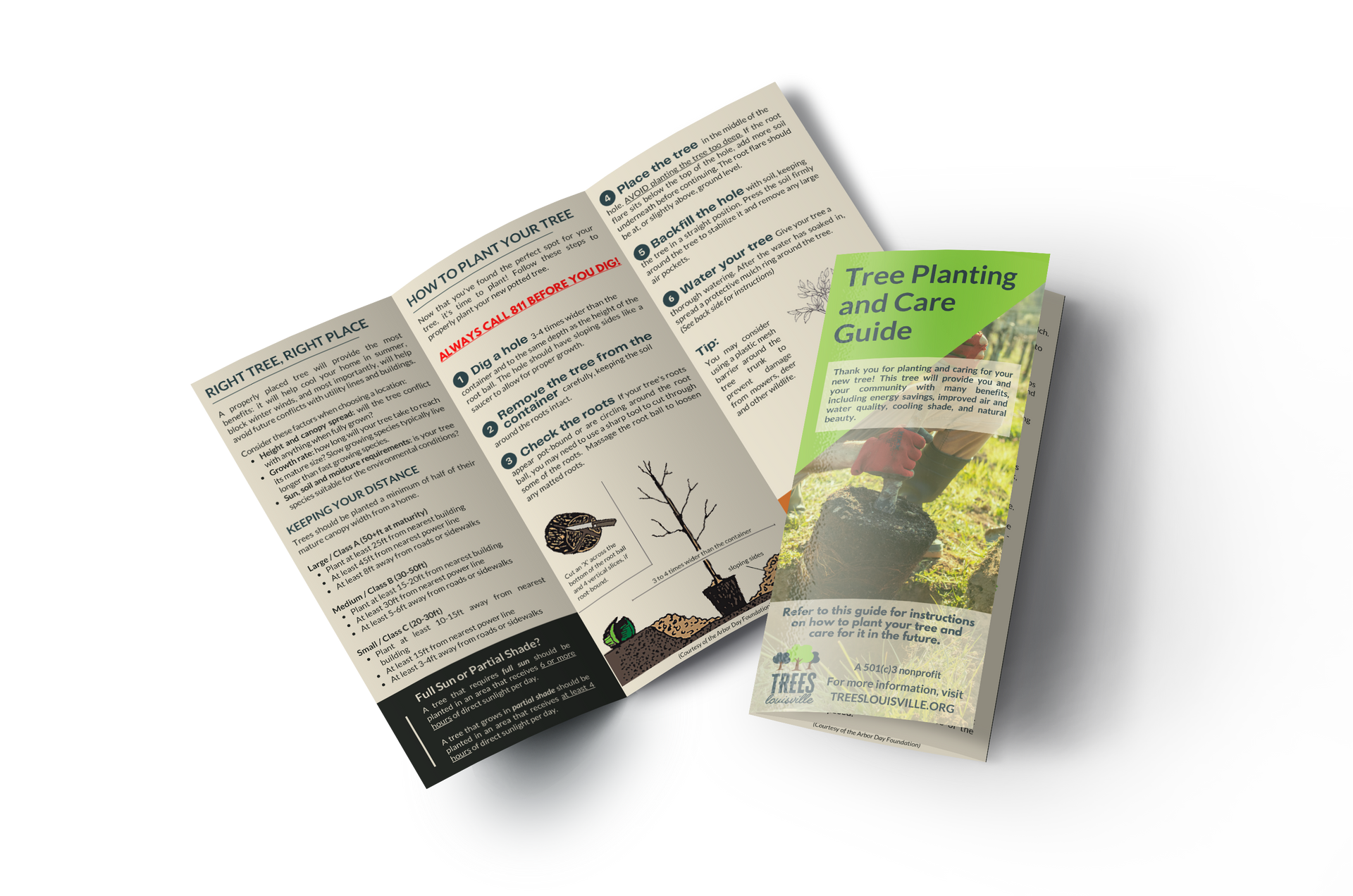What to Plant
Think about the kind of features you might like your tree to have. Do you want it to provide lots of shade? Great fall color? Edible fruit or fragrant flowers? Minimal maintenance? With these factors in mind, you'll be able to narrow down the perfect tree for your yard.
Native vs. Non-Native vs. Invasive
Why are these distinctions important? TreesLouisville will plant both native and non-native species at projects, but we will never plant invasive species. While we would love to only plant native species, it is important to remember that urban planting sites like tree wells and asphalt parking lots are not 'native' environments, and these locations can present challenging conditions (soil compaction and pollution, for example). In these scenarios, we select trees that will be most adaptable, which include some non-native species.
We also plan for future conditions. Climate change is already causing warmer than average temperatures and more significant drought and precipitation events. Some native trees may no longer thrive in these new conditions, so we must find more resilient species that typically grow in other climate zones.
Native
A species that has historically existed and adapted in that area
Non-Native
A species that has not historically existed in the area and has been introduced due to human activities
Invasive
A species that is non-native to particular ecosystems and the introduction of them is likely to cause economic, environmental, or human health harm.






